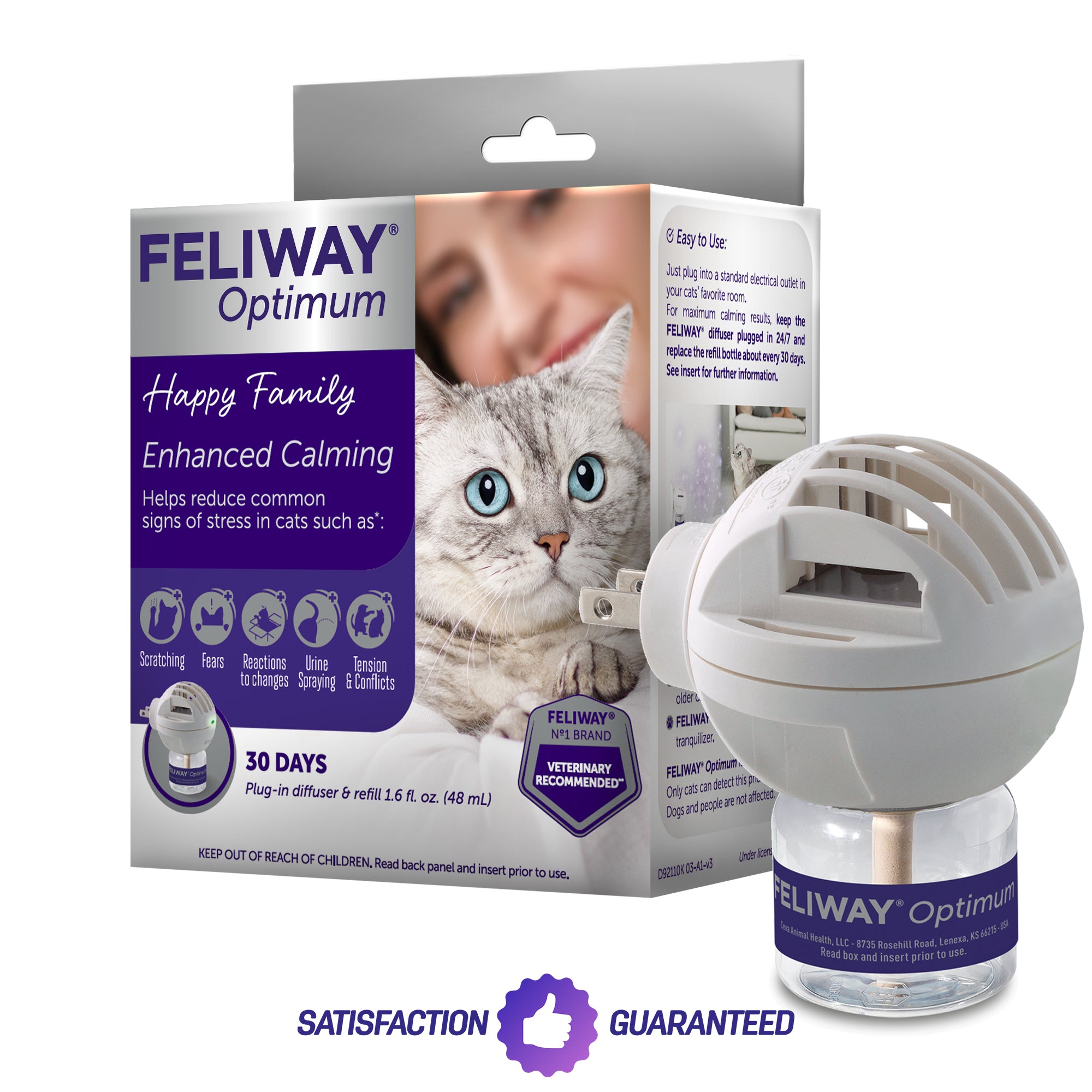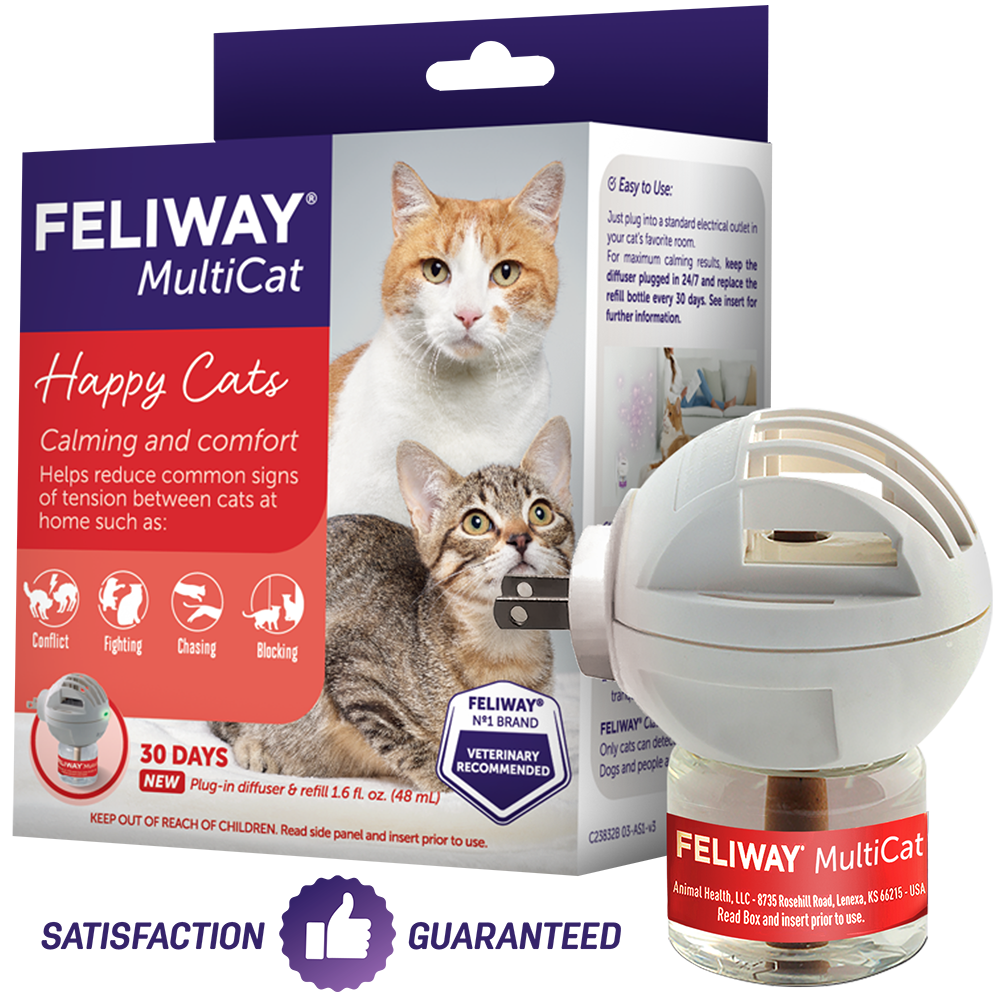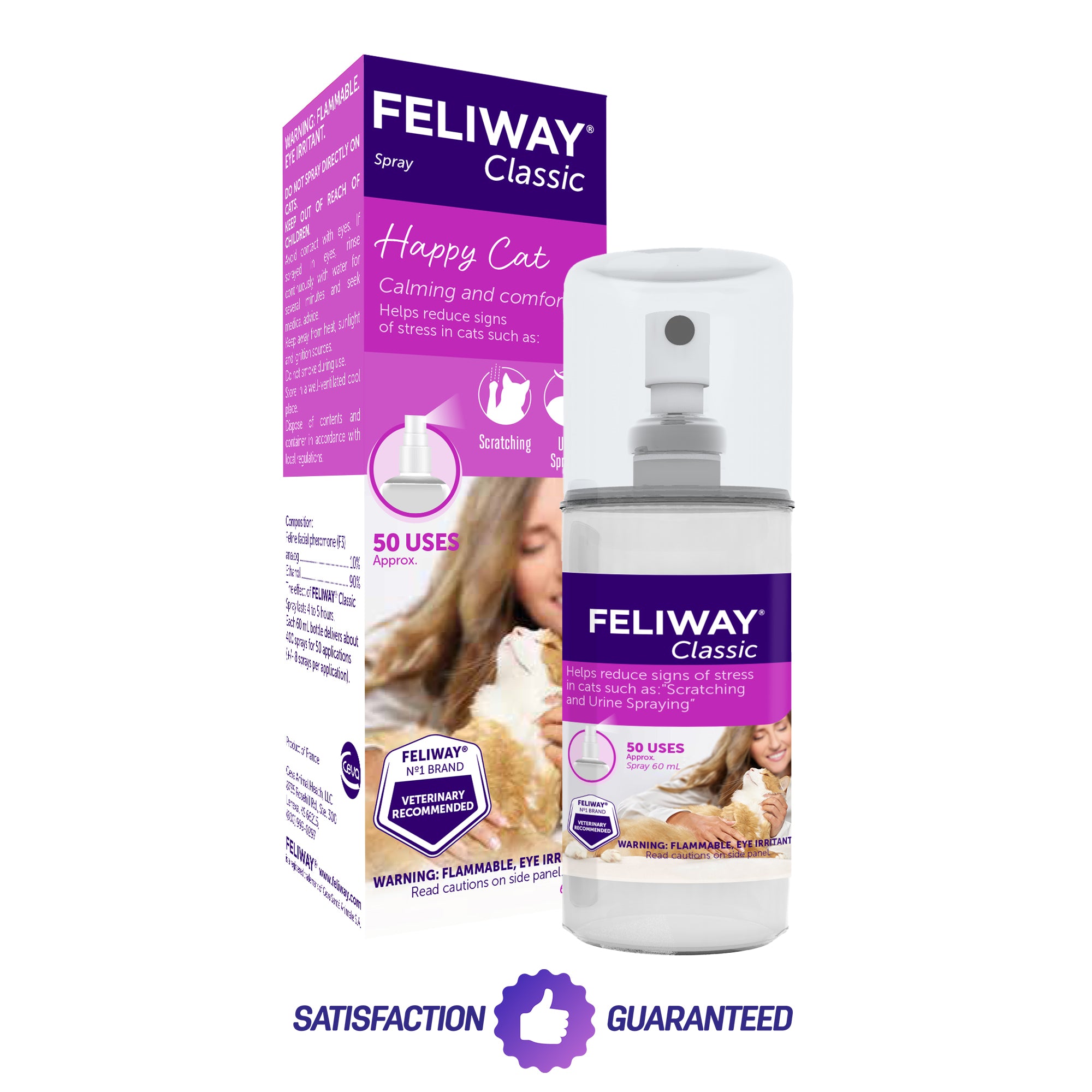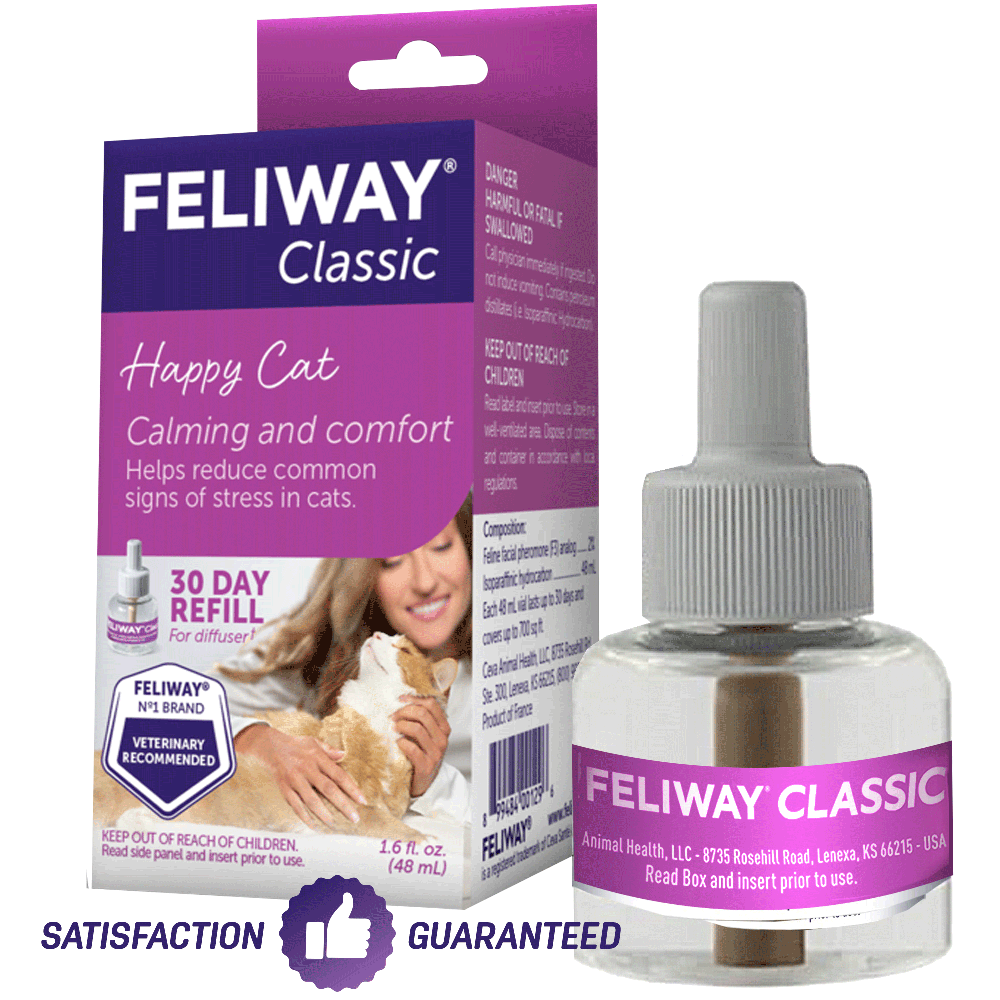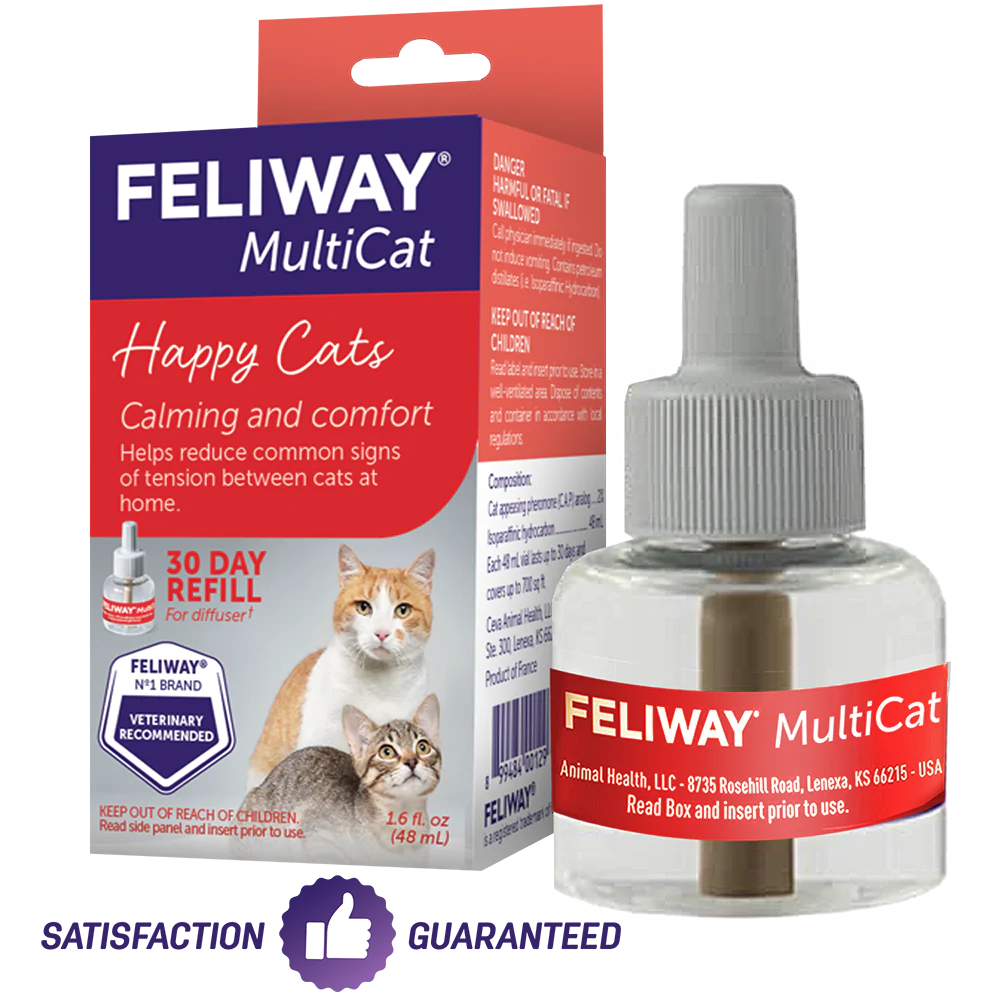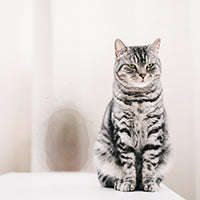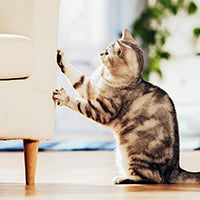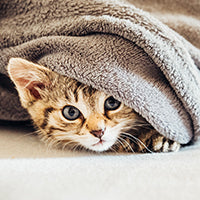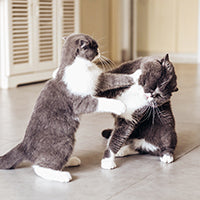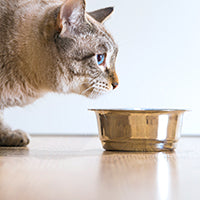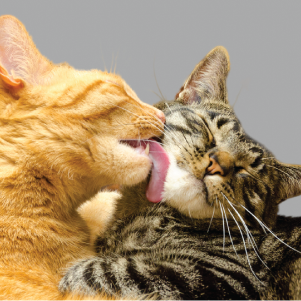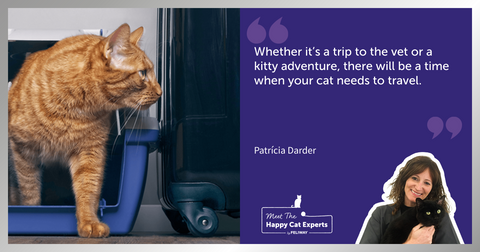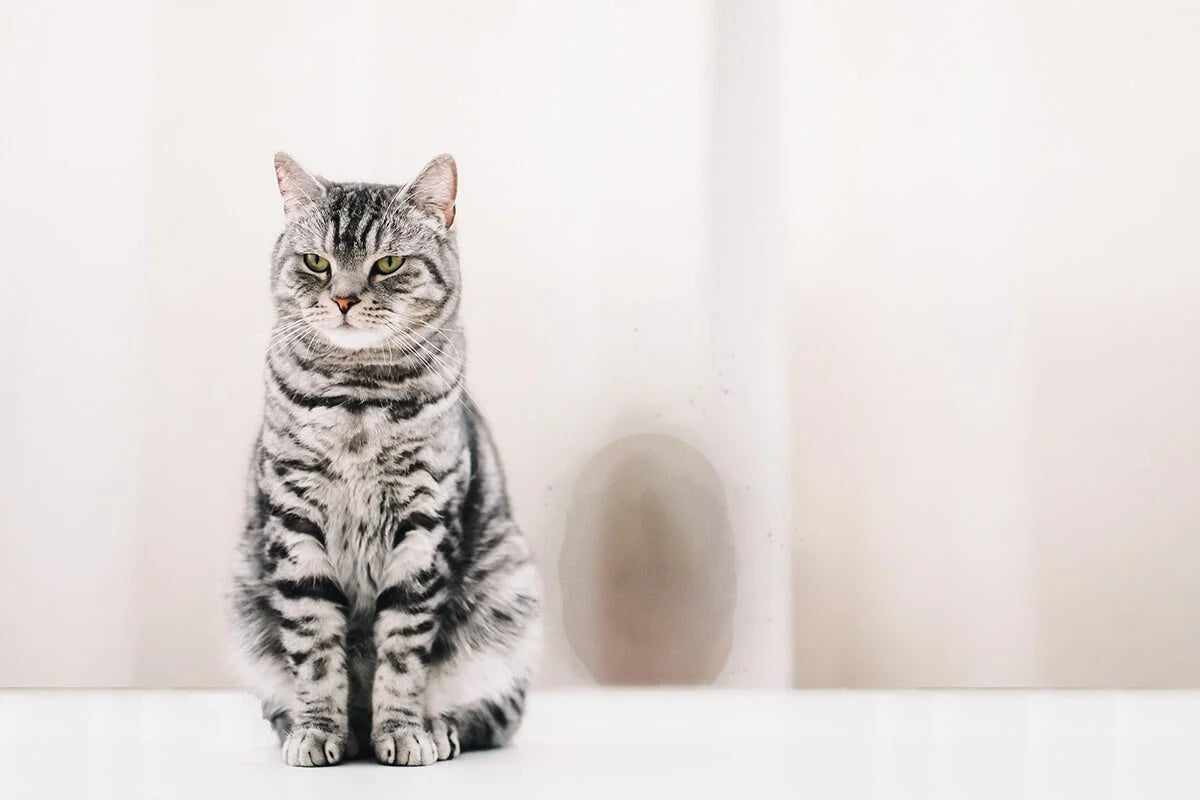
Why Do Cats Pee on Things?
Cats are renowned for their cleanliness. It’s thought that they spend at least five hours a day grooming and cleaning their fur!
But no matter how clean and tidy our kitties are, sometimes their toilet habits can be a little unusual! If your cat has started to urinate or spray on the furniture or carpet, it can be confusing and concerning.
So why might your kitty’s litter tray habits change, especially if they have previously been well housetrained?
Reasons For Unusual Kitty Urination
There are many different reasons as to why your feline friend may have taken to urinating outside of the litter tray, ranging from medical (such as urinary tract infections) to a response to change, stress or anxiety.
Some common reasons why your kitty may be peeing on things other than their trusty litter tray include:
They might be spray marking, not urinating
It’s important to determine whether your cat is urine marking or relieving a full bladder. Urine marking is a natural instinct for cats, as unpleasant as it may be for us cat parents! If your cat is urine marking, they will be standing with their tail upright, while a small amount of urine is sprayed backwards onto a vertical surface, leaving a scent mark. Common places that cats may do this include near doors, windows, curtains, sofas and sometimes even shopping bags - basically anywhere that may smell different to what they are used to, which challenges their feeling of safety.
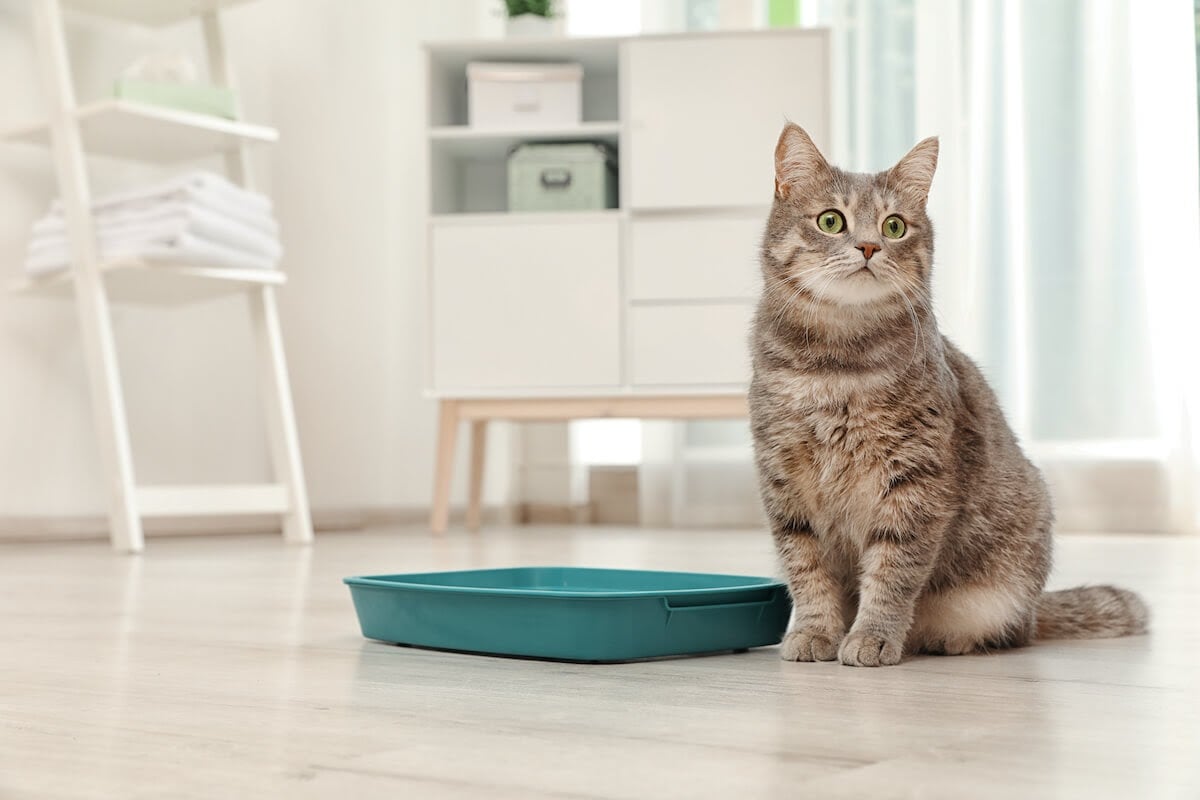
This is different to your kitty deciding that another area is preferable to their litter tray. Soft items, such as sofas, carpets, duvets or pillows may be attractive to them, as they are comfortable on their paws, the urine soaks into the material, and they may be areas that have a scent that makes them feel safe. If your kitty has taken to urinating in other areas and they are not using their litter tray, get them checked with your vet to make sure there are no underlying medical causes. Also check the location of the litter tray as well as the litter substrate.
Changes in the home and other stress
Cats aren’t fans of change, especially changes inside their territory. Any changes about the home can result in stress or anxiety, causing your kitty to urine mark their territory. So if you have recently made changes, such as rearranging furniture, or had new visitors that your furry friend isn’t accustomed to, consider if that coincides with your cat starting to urinate outside the litter tray.
You can help comfort your cat during these changes by making sure they have key resources available. Ensure your kitty has access to resting / hiding places, plenty of space, food and water bowls, as well as litter trays - and make sure they have a predictable routine.
Territory marking
Cats like their home to smell like them - you may have noticed your pet rubbing their face on things to set these reassuring markers around the house! This marking helps cats feel safer and more secure, and lets other cats know to stay away! Of course, marking territory with urine is completely different to emptying the bladder; cats that are urine marking will often also use their litter tray.
Inaccessible or untidy litter tray
Cats can be fussy! They like everything to be ‘just so’. Your kitty may be urinating outside their litter tray because they aren’t happy using it. This could be because of its location, accessibility, litter substrate or the maintenance/hygiene of the tray. Make sure you clean the tray daily and change the litter regularly. Remember: cats appreciate cleanliness and need their space to be spick and span!
Health Problems
If you have noticed changes in your cat’s urination tendencies, and aren’t sure why, it is important that you get them checked by a vet. Increased - or no - urination can be a sign of underlying health problems, or could change due to aging, so always check that your pet is healthy. If your cat isn’t able to urinate, be sure to seek immediate medical help as this can be life-threatening.
How To Help Your Kitty with Urinating Outside the Litter Tray
Inappropriate urination is a common problem among households with cats, but by identifying the cause, you can help your pet. The most important thing to remember is to never punish your cat for urinating outside of their litter tray - whether there is a medical reason or they are simply anxious, punishing them will only make the situation worse. Instead, here are some tips on how you can help your kitty:
Make sure your kitty has multiple litter trays throughout the house.
Cats like to feel safe when using the toilet, so quiet places are ideal. If you have multiple cats, it’s important that each cat has their own litter tray that they can access without interacting with each other. Kitties don’t like to share, and if they have to share their litter tray with a fellow feline friend they may decide to take their ‘business’ elsewhere ie. your carpet!
Help your cat be happy with their litter tray.
If your kitty doesn’t seem to want to use their litter tray, try changing the litter substrate you use. Why not make it into a little experiment? Have 2 or 3 trays in the same place but with different substrates in each and see which your cat prefers. Many cats prefer to use a clumping, unscented litter with a fine consistency, like sand. Try to introduce your cat to the new litter substrate gradually so as to put them at ease, and ensure the litter is deep enough for them to dig in. It’s been said that the less they dig, the less they like the litter, so monitor this closely!

Check that trays are accessible.
Sometimes the tray itself is the issue. As cats get older, they may struggle to get into a high-sided litter tray. Consider the age of your cat and how agile they are. Much like us humans, the older kitties get, the worse their joints are. Check that your pet is able to access their tray!
Make sure the tray is large enough.
Similarly, the size of the litter tray is an important factor. If your kitty doesn’t have enough room to turn around in the tray, then it’s too small. Covered trays often create a claustrophobic space that isn’t tall enough for your cat, so consider getting an open tray to give them more space.
Check that trays are clean enough
Cleaning the tray regularly is essential! Unsurprisingly, cats don’t like to use litter trays that are heavily soiled, so ensure that the tray is spot cleaned daily and the tray itself is cleaned every 2-3 weeks. Cats have sensitive noses, so try to avoid any strong-smelling cleaners as this may deter them from using the tray.
Place trays where your kitty likes to use them.
If you have noticed a trend in where your cat seems to be urinating, try relocating their litter tray to this area. There may be a reason why this area was a preference for them - perhaps it’s a secluded area of the house. If this location isn’t ideal, gradually move their tray a little bit each day to a better area, keeping in mind what your kitty liked about the location.
Similarly to how our kitties like to mark their territory, if they catch their scent in places they’ve urinated, they are more likely to urinate there again. That’s why it’s crucial that you clean the areas they’ve urinated on thoroughly to remove the odour, otherwise all your litter tray efforts will go to waste!
Get Your Personal Advice on Why Your Cat maybe peeing on things with our quiz Cat Pee, Help Me!
Support Your Cat With FELIWAY Classic
Excessive or unusual urination can be a symptom of kitty stress or anxiety. If your pet needs a little extra support, FELIWAY Optimum is proven to help cats with urine marking.
